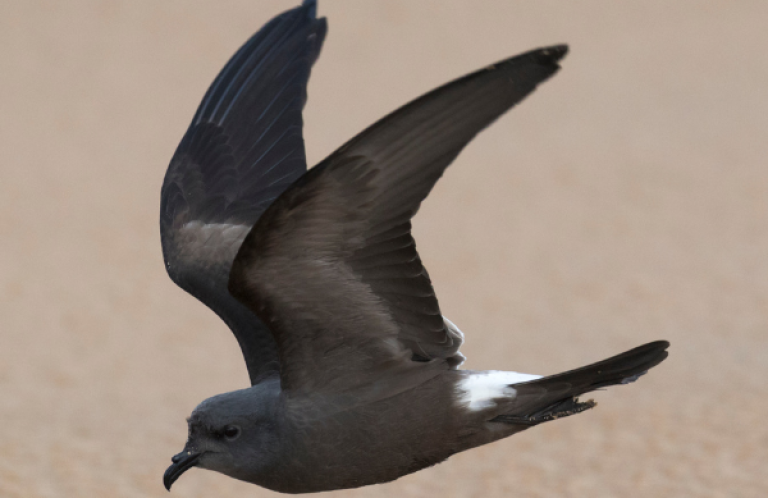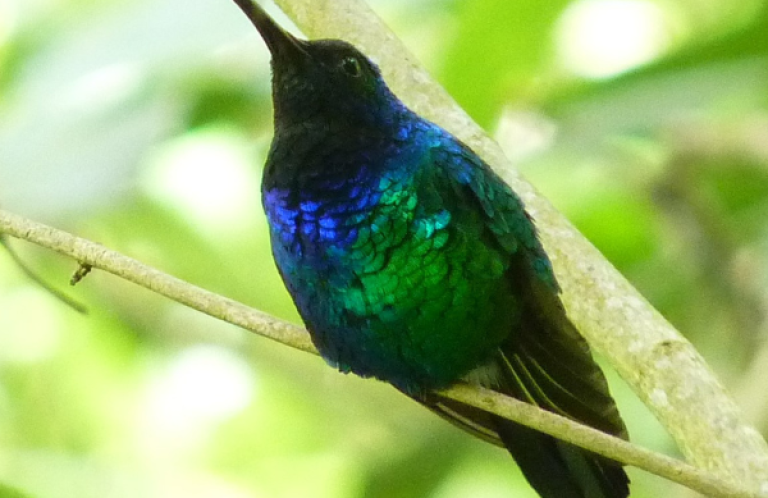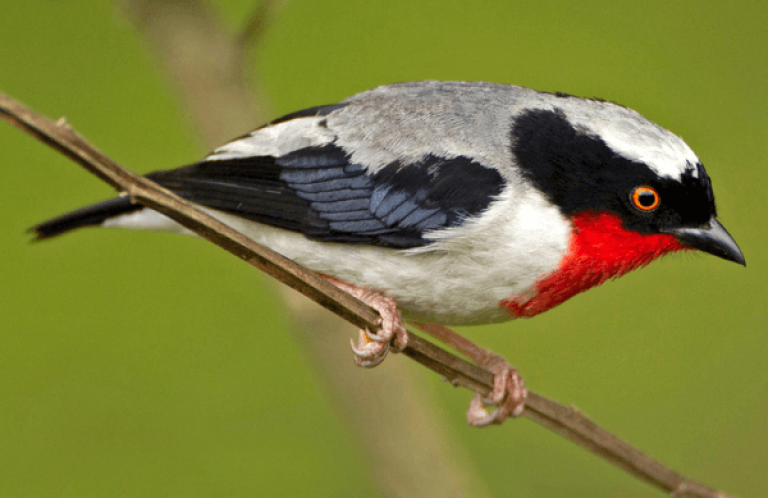Researchers Confirm Presence of Endangered Diablotin Black-capped Petrel on Dominica, Raising Hopes of Finding Nesting Area
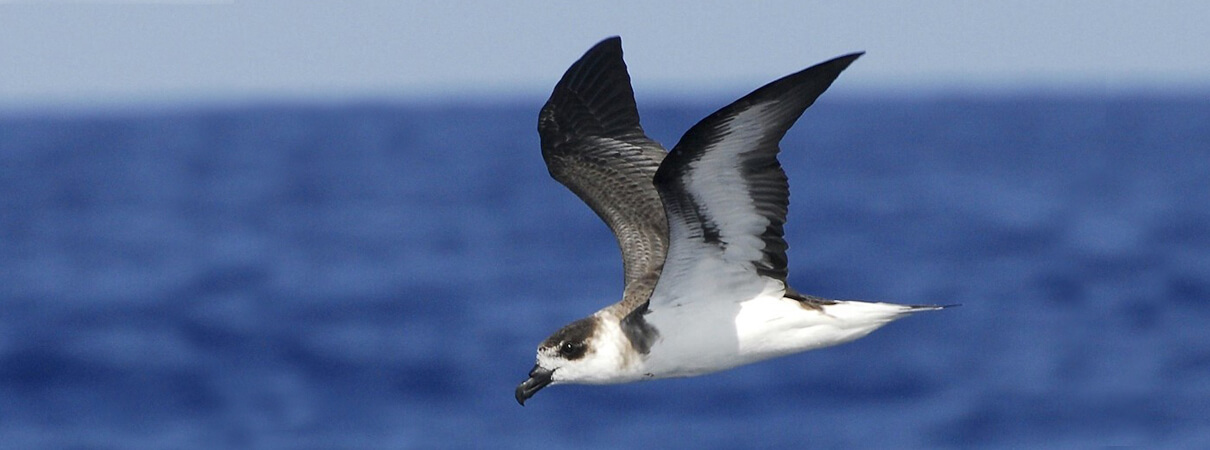
The Endangered “Diablotin,” or Black-capped Petrel, in flight by David Hollie
(April 19, 2022) Researchers have confirmed a sighting of an Endangered Black-capped Petrel (Pterodroma hasitata), known locally as “the Diablotin bird,” in flight over Dominica earlier this year. Working with Dominica's Forestry, Wildlife and Parks Division, the researchers used thermal binocular technology to record a video of the bird flying through the night near a suspected nesting area. If nesting is confirmed, Dominica would be the second known nesting island for Black-capped Petrel in the world. (Currently, nesting is only known to occur on Hispaniola, the island comprising Haiti and the Dominican Republic.)
The Black-capped Petrel may not be one of Dominica's most famous birds, but it is one of the most mysterious. Once abundant in the Caribbean, this rare seabird was extirpated in the late 1800s due to overhunting, modification of its nesting habitat through deforestation, and the introduction of mammalian species that prey on young birds and eggs. With an estimate of fewer than 5,000 birds remaining, it is one of the most endangered seabirds in the Caribbean and globally. On Hispaniola, just over 100 nests have been found by conservationists.
On Dominica, the Diablotin bird is an integral part of the local culture. Mountains where it once nested still bear its name, and traditional songs and poems mention it. The last Black-capped Petrel known to be nesting on the island was found in 1862, though historical evidence suggests that the species persisted until the 1930s. Numerous searches to find evidence of nesting of this species on Dominica during the second half of the 20th century were unsuccessful.
Nevertheless, in recent years, occasional findings of adult and juvenile birds on the ground in coastal or inland villages on Dominica raised hope that the species might still be nesting on the island. However, as local Black-capped Petrel expert Stephen Durand explained, “The Diablotin is nocturnal and flies to and from its nest only at night, making it very difficult to observe. It also nests underground, in crevasses or burrows, on steep mountain slopes covered by thick vegetation—this adds to the difficulty of finding its nesting areas.”
In January 2022, Durand and Eugene Felix, of Dominica's Forestry, Wildlife and Parks Division of the Ministry of Environment, Rural Modernization & Kalinago Upliftment, hosted a team of petrel researchers led by Yvan Satgé, a Research Associate at the South Carolina Cooperative Fish and Wildlife Research Unit, and Gérard Millischer, of Parc National du Mercantour in France. Using the best available thermal binocular technology — designed to detect, observe, and recognize objects that emit heat — Satgé and Millischer were able to record the video of the Black-capped Petrel in flight.
Satgé, a core member of the International Black-capped Petrel Conservation Group (IBPCG) and a board member of Caribbean non-profit Environmental Protection in the Caribbean (EPIC), said, “This is a very important and exciting observation: this sighting not only confirms that Black-capped Petrels are present on Dominica but it also points us directly to the area where they might be nesting. It takes time to find a petrel colony but all the efforts pursued by Stephen Durand and the Forestry Division are paying off. This observation really boosts our hopes of finding the Petrel's nesting areas soon.”
In 2015 and 2020, EPIC conducted radar surveys on Dominica, showing that petrels were active on the island. These surveys were instrumental in locating Black-capped Petrel flyways and were used to estimate the size of the population at possibly in the hundreds, but radar technology could not be used to locate nesting areas. The thermal technology used by Satgé and Millischer was not able to confirm the size of the population but provided details on the flight pattern of the individual near Trois Pitons.
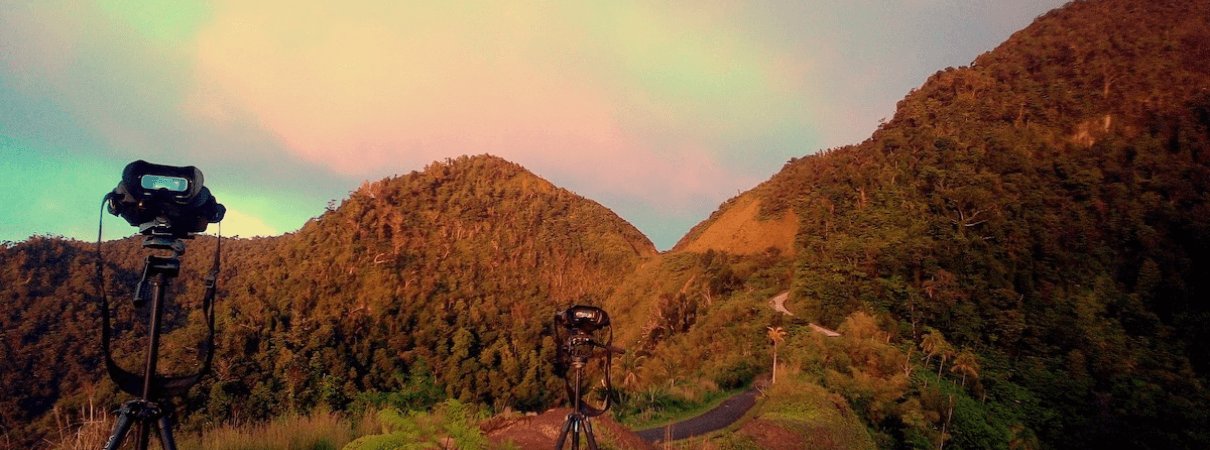
Thermal binocular technology used to observe Black-capped Petrels by Gérard Millischer
“The petrel was between 700 meters (2297 feet) and 1 kilometer (3280 feet) away from us. Still, we were able to see it come out of the clouds that surrounded Morne Trois Pitons and fly towards the sea,” Millischer said. “Unfortunately, the thick layer of clouds prevented us from precisely seeing where it was coming from on the mountain but we are very confident that this petrel had just left its nest and was leaving for a foraging trip at sea.”
Jennifer Wheeler, core member of the IBPCG and lead author of the 2021 Black-capped Petrel Conservation Update and Action Plan, said: “Finding nesting sites of the Black-capped Petrel on Dominica would be a real game-changer for its conservation. We could finally take action to protect this charismatic species on Dominica, which offers some of the most pristine nesting habitat in the Caribbean. It would also be a stepping stone to possibly finding nesting areas on the neighboring island of Guadeloupe, where a small population could be persisting. The years ahead look very promising!”
To support Durand and Felix, the IBPCG is already planning next steps on Dominica, concentrating search efforts on the area that Satgé and Millischer located on Morne Trois Pitons. Adam Brown, EPIC's lead scientist and Black-capped Petrel expert, said, “We are confident we can find and protect the nesting areas of the Diablotin bird on Dominica. We've never been that close: using all the tools available, all we need is one big push. This January 2022 expedition gave us the momentum to do just that.”
This effort was supported by American Bird Conservancy, BirdsCaribbean, and Environmental Protection in the Caribbean.
###

American Bird Conservancy is a nonprofit organization dedicated to conserving wild birds and their habitats throughout the Americas. With an emphasis on achieving results and working in partnership, we take on the greatest problems facing birds today, innovating and building on rapid advancements in science to halt extinctions, protect habitats, eliminate threats, and build capacity for bird conservation. Find us on abcbirds.org, Facebook, Instagram, and Twitter (@ABCbirds).
BirdsCaribbean is a vibrant international network of members and partners committed to conserving Caribbean birds and their habitats. We raise awareness, promote sound science, and empower local partners to build a region where people appreciate, conserve and benefit from thriving bird populations and ecosystems. Find us on birdscaribbean.org, Facebook, Instagram, Linkedin and Twitter (@BirdsCaribbean)
Environmental Protection in the Caribbean (EPIC) is an independent non-profit founded in 2000 with the mission of protecting the Caribbean environment through research, restoration, education and advocacy. EPIC is a results-driven organization that works on challenging, under-addressed issues through holistic programs resulting in strategic community-based actions. By recognizing the connections between ecological health, economic vitality, and the quality of life for Caribbean residents, EPIC's work supports the vision of Caribbean communities leading the way towards a more resilient and sustainable future. To learn more about EPIC and its Caribbean initiatives visit our website at epicislands.org or find us on Facebook, Instagram, Twitter, YouTube, or LinkedIn.
The International Black-capped Petrel Conservation Group is a collaborative association of organizations and individuals sharing common interest for the conservation of the Diablotin Black-capped Petrel across its range. In its 2021 Conservation Update and Action Plan, the group identifies strategies and actions most likely to combat the threats affecting the species. To learn more about the Black-capped Petrel, please visit the International Black-capped Petrel Conservation Group's Website: https://bit.ly/BCPE-WG.
Media Contact: Jordan Rutter, Director of Public Relations| jerutter@abcbirds.org | @JERutter





































